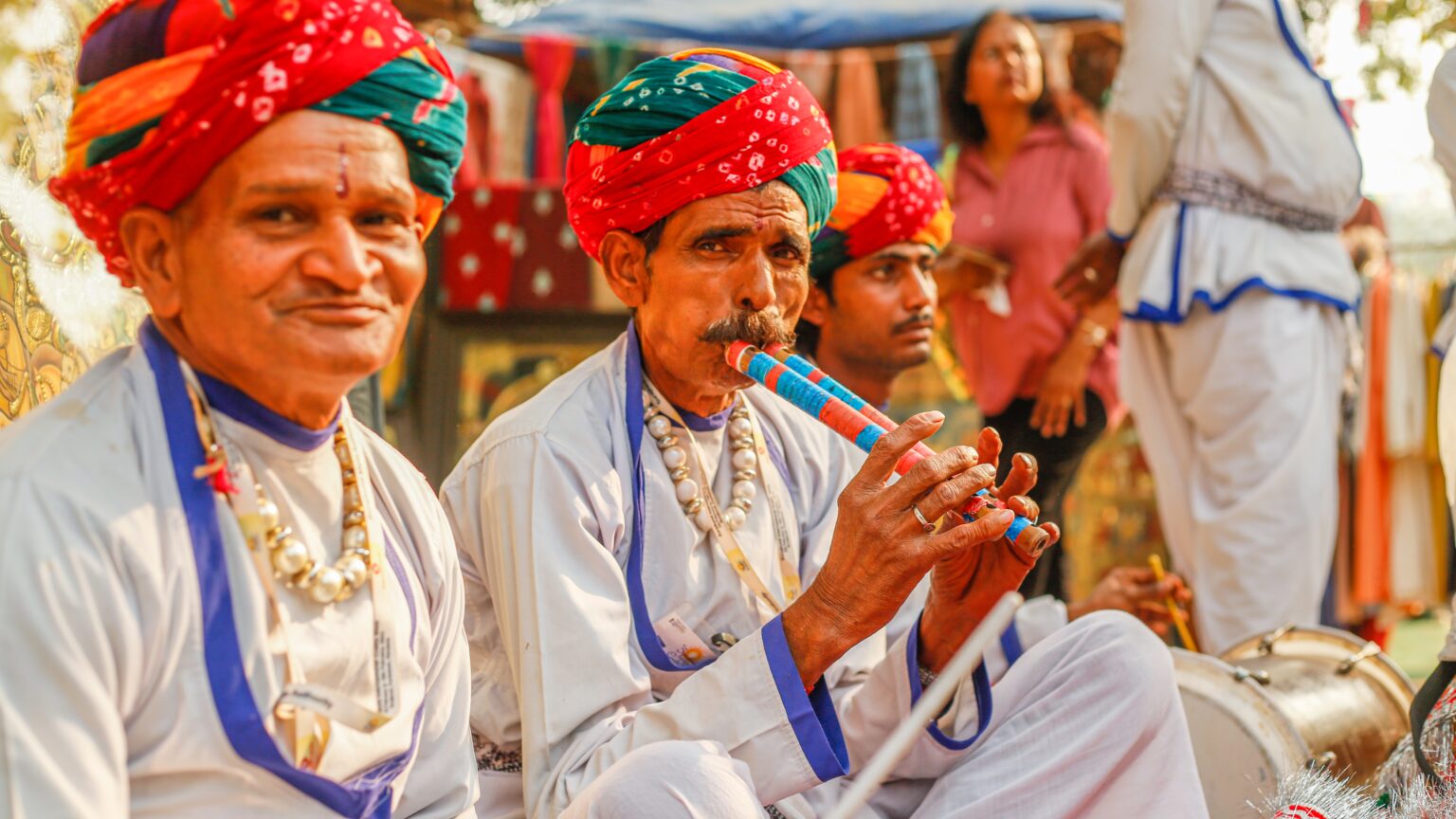Rajasthan, the land of kings, is known for its vibrant culture, rich traditions, and colorful festivals. Amongst the many cultural delights that Rajasthan has to offer, attending a traditional Rajasthani folk music and dance performance is an experience like no other. From the soul-stirring melodies to the energetic dance moves, these performances are a celebration of the state’s cultural heritage and captivate audiences with their raw beauty.
Rajasthani folk music and dance have long been an integral part of the state’s cultural fabric. Passed down through generations, these art forms are a reflection of the daily lives, struggles, and joys of the people of Rajasthan. The folk music and dance performances provide a glimpse into the rich traditions and heritage that have shaped the identity of the region.
As you enter the colorful arena, the air is filled with anticipation and excitement. The traditional setup consists of a stage adorned with colorful fabrics, traditional props, and musical instruments. The performers, dressed in vibrant attire reflecting the true essence of Rajasthan, take their positions, ready to transport the audience into a world of rhythm and melody.
The performance commences with the soulful strains of the Manganiar musicians playing the traditional instruments like the sarangi, dholak, and harmonium. The Manganiars, a community of hereditary musicians, are known for their exceptional skills and their ability to evoke powerful emotions through their music. The melodies sung by the Manganiars often revolve around themes of love, nature, and spirituality. Their voices resonate through the air, capturing the essence of Rajasthan and taking the audience on a poetic journey.
Accompanying the Manganiars are the Langas, another community of traditional musicians. The Langas too hold a significant place in Rajasthani folk music, showcasing their mastery over instruments like the sarangi, kartal, and algoza. The Langas sing songs that narrate tales of valor, bravery, and honor. Their spirited performances, coupled with the energetic beats of the dholak and the soulful strains of the sarangi, create an atmosphere of joy and enthusiasm.
As the music reaches its crescendo, the dancers, with their colorful costumes and infectious energy, grace the stage. The dancers, belonging to various Rajasthani communities, perform a myriad of folk dances that are unique to the region. From the graceful movements of the Ghoomar dance to the energetic performances of the Kalbeliya dance, each dance form tells a story, celebrates the rich cultural heritage, and showcases the best of Rajasthani traditions.
The Ghoomar dance, a traditional women’s dance, is known for its graceful twirls and spins. The dance is characterized by the dancers wearing flowing skirts, often in bright colors, which create a mesmerizing effect as they swirl around. The synchronized movements and elegant postures of the dancers, accompanied by the rhythmic beats of the dholak and sarangi, make for a captivating spectacle.
The Kalbeliya dance, on the other hand, is performed by the Kalbeliya tribe, known for their snake-charming skills. The dancers, both men and women, don striking black outfits adorned with mirrors and colorful embroidery. The movements of the Kalbeliya dance mimic the slithering of a snake and are accompanied by traditional Rajasthani folk songs. The unique blend of dance, music, and storytelling in the Kalbeliya dance is a treat for the senses and offers a glimpse into the ancient traditions of Rajasthan.
The Bhavai dance, another popular Rajasthani folk dance, demands incredible skill, balance, and strength. The dancers, usually women, balance multiple pots on their heads while performing intricate steps and balancing on the edge of a sword or a glass. This acrobatic dance form is a testament to the bravery and grace of the performers and leaves the audience spellbound.
Apart from these popular dances, there are numerous other folk dances unique to different regions of Rajasthan, each with its distinct style, costumes, and musical accompaniments. From the energetic Teratali dance to the resplendent Chari dance, each performance showcases the diversity and richness of the Rajasthani culture.
Attending a Rajasthani folk music and dance performance is not just a visual and auditory delight; it is an opportunity to connect with the rich cultural heritage of the region. As you watch the performers sing and dance, you become a part of an ancient tradition that has withstood the test of time. The performances infuse a sense of pride and joy, evoking a feeling of unity and celebration.
The traditional Rajasthani folk music and dance performances are not limited to grand stages in the cities; they can be witnessed in the rural villages of Rajasthan as well. These performances are often a part of festivals, weddings, and social gatherings, where the local communities come together to celebrate their cultural roots. The warmth and hospitality of the local communities add an additional layer of authenticity to the experience, making it even more memorable.
Rajasthan, with its colorful traditions and vibrant culture, offers a rich tapestry of folk music and dance that is truly unique. Attending a traditional Rajasthani folk music and dance performance transports you to a world of mesmerizing melodies and graceful movements. It offers a glimpse into the heart and soul of Rajasthan, revealing the resilience, creativity, and passion of its people.
So, if you find yourself in the land of kings, do not miss the opportunity to immerse yourself in the ethereal beauty of Rajasthani folk music and dance. Witness the rhythmic beats, feel the energy of the dancers, and let the melodies transport you to a realm where time stands still. The traditional Rajasthani folk music and dance performances are an experience that will leave an indelible mark on your heart and create lifelong memories.

